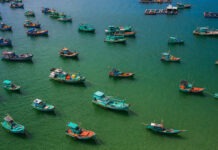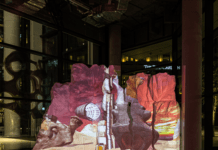From Paklenica climbing sites, beautiful beaches of central Dalmatia, great food of Istria, partying on the islands, sailing the Adriatic, Croatia has a lot to offer to its visitors. One of the most popular countries to visit in Europe, Croatia is home to some dazzling sights and some stupendous cities. Venetian palaces snuggle up to Napoleonic forts, Roman columns protrude from early Slavic churches, and Viennese mansions face off with Socialist Realist sculpture. Excellent museums showcase treasures that cover the gamut of European history, from the prehistoric to the post-communist, telling a story that is in equal parts fascinating and horrifying. Additionally, Croatia’s extraordinary island-speckled coastline is indisputably another of its grand attractions. Here are the top cities to visit in the country.
Dubrovnik: Often described as ‘the Pearl of the Adriatic’, Dubrovnik is an absolutely gorgeous city to visit in Croatia. Lying at the foot of Mount Srd which towers above it, Dubrovnik’s stunning setting makes for fantastic viewing as its distinctive walls surrounding the picturesque old town jut out into the beautiful blue waters around it. Here you are greeted by a mishmash of ancient stone buildings, tightly knitted together with enticing narrow alleys running between them. Small bars and restaurants dot the place, hidden away among its wealth of historical sites. It is the most popular destination in the country and with good reason too.
Karlovac: The ‘City on Four Rivers’ as Karlovac is known is an interesting place to visit. It was designed as a ‘Renaissance town’ with a careful attention to beauty and harmony. The old town is in the shape of a six-pointed star, divided into 24 blocks of equal size. Within the star are about a dozen geometrical streets lined with houses that once belonged to the town’s merchants, artisans and military command.
There is also Foginovo beach right on the Korana river that is a popular summer bathing spot for locals and visitors with diving boards, watersports, a cafe-bar and evening events. Take a look at the new and exciting Karlovac freshwater aquarium, Aquatika.
Sibenikz: With its incredible cathedral, beautiful beaches and medieval old town, Sibenik is an up and coming destination that is becoming increasingly trendy due to the music festivals that it hosts in an old Croatian fortress. A picturesque city, Sibenik is situated on the side of a hill overlooking the beautiful azure waters below and as such, steep alleys and steps characterize the center. There are actually four old fortresses for visitors to explore though it is St James’ Cathedral, which is the main attraction. From here you can easily travel to the delightful islands of Zlarin and Prvic as well as the stunning Krka National Park.
Rijeka: The third largest city in the country, Rijeka contains Croatia’s most important seaport and mixes the grand with the grimy. While the inevitable urban sprawl has accompanied its development, the old parts of the city are nice to explore with Austro-Hungarian architectural styles dominating the center. Numerous museums can be found here that explore the city’s long and varied history with Tsart Castle being of particular interest. Located on Kvarner Bay, most visitors use it as a gateway to Croatia’s islands.
Osijek: Situated not far from the borders with Hungary and Serbia, over the centuries Osijek’s important location has seen it swap hands numerous times with the Romans, Hapsburgs and Ottomans all having ruled at one point. Consequently, there is an eclectic mix of architectural styles and the city actually has three centers; each with their own unique atmosphere.
Tvrda, the oldest part, is the most picturesque of the three and highlights the cosmopolitan side of Osijek. Aside from the fortified center the Tvrda dating back to the 18th century, there is also the splendidly neo-Gothic Church of St Peter and St Paul and the grand Europska Avenija, along which can be seen some excellent examples of the Art Nouveau architecture popular in this part of the world in the late 19th century and a slightly unnerving statue entitled Soldier in the Throes of Death.
Zadar: Located on a small peninsula, this lively city is a lovely mix of old and new, and certainly has its charms. With Roman ruins, thirty-four old churches and a plethora of historic buildings to be found in the old town, wandering around its center is a peaceful endeavor. The vibrant bars and cafes that are found absolutely everywhere here reinvigorate the place and breathe life into its ancient streets. The two main attractions in Zadar are the interesting and innovative architectural installations named the Sea Organ and Sun Salutation. On top of all this, Zadar is the perfect base from which to explore some of the nearby islands.
Split: Croatia’s second-largest city, Split (Spalato in Italian) is a great place to see Dalmatian life as it is really lived. Always buzzing, this exuberant city has just the right balance between tradition and modernity. Step inside Diocletian’s Palace (a Unesco World Heritage Site and one of the world’s most impressive Roman monuments) and you will see dozens of bars, restaurants and shops thriving amid the atmospheric old walls where Split has been humming along for thousands of years.






























